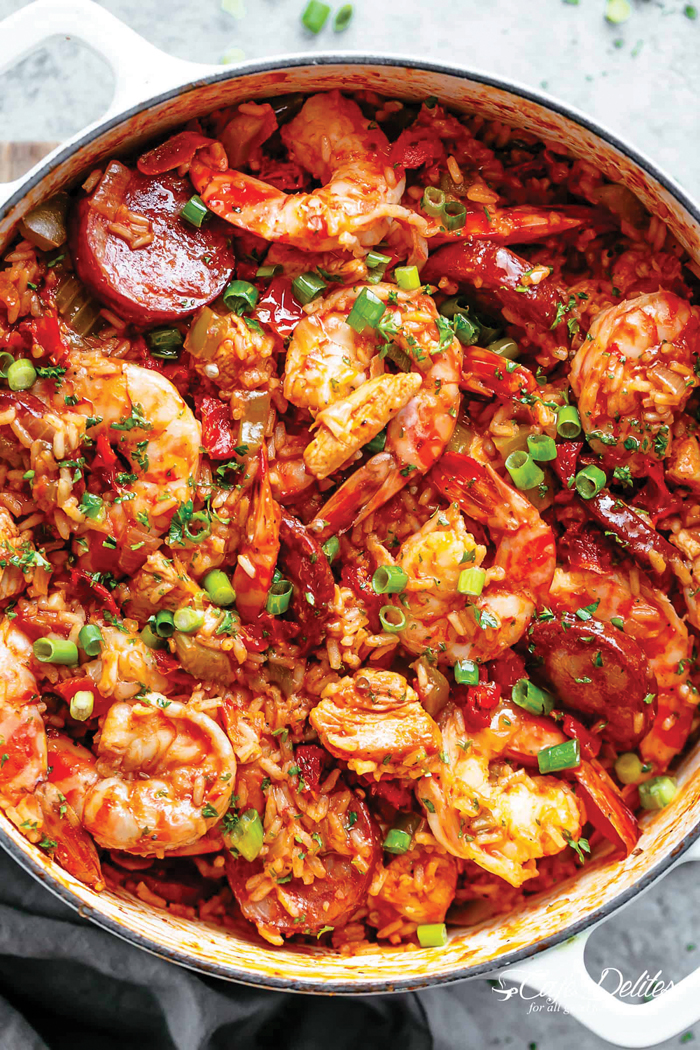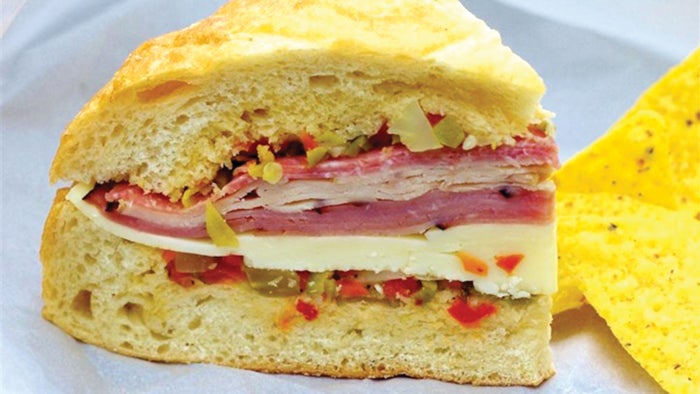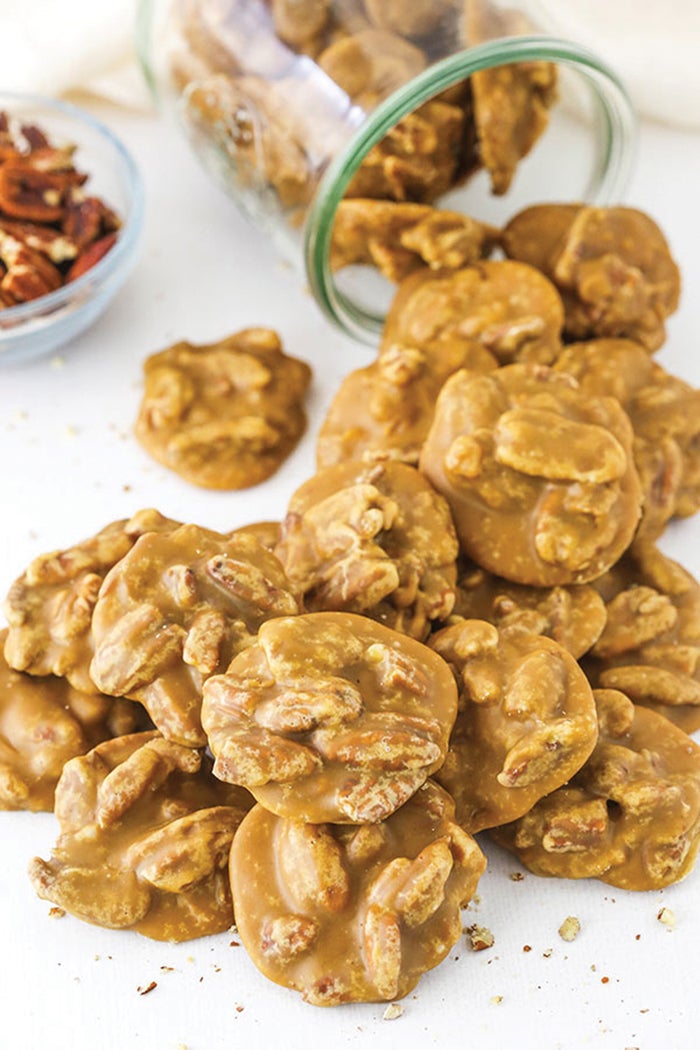For Mardi Gras, dive into a jambalaya and nibble on pralines
Published 12:00 am Tuesday, February 25, 2020
Tomorrow is Ash Wednesday, the beginning of Lent, a 40-day season of fasting and prayer leading up to Easter. Abstaining from meat and large meals on Friday during Lent is a Catholic practice, and observed in some other denominations.
Today was called Fat Tuesday or Shrove Tuesday. Shrove means a person has been absolved of their sins.
The tradition was to use up your sugar and butter before then, so you wouldn’t be tempted to overindulge during the 40 days.
Fat Tuesday was the day for pancakes, one last sweet meal before the discipline of Lent, when people typically give up something as an offering. Many give up chocolate or coffee or desserts, so Fat Tuesday comes as a day to indulge before deprivation.
Mardi Gras, which is French for Fat Tuesday, became a big deal in medieval Europe in the 17th and 18th centuries.
When the French settled the region that came to be known as New Orleans, the celebration started almost immediately. In March 1699, French-Canadian Explorer Jean Baptitste Le Moyne Siur de Beinville named the plot of land he found Point du Mardi Gras, because it was, indeed, Fat Tuesday.
In 1703, the tiny settlement of Fort Louis de la Mobile celebrated America’s very first Mardi Gras.
In 1704, Mobile established a secret society similar to those that form current Mardi Gras krewes. It lasted until 1709. In 1710, the “Boeuf Gras Society” was formed and paraded from 1711 through 1861.
By the 1730s, Mardi Gras was celebrated openly in New Orleans. The earliest reference to Mardi Gras “Carnival” appears in a 1781 report to the Spanish colonial governing body.
By the late 1830s, New Orleans held street processions of maskers with carriages and horseback riders to celebrate Mardi Gras.
Revelers know to dress in purple, green and gold, and adorn themselves with long beads caught from the floats of previous parades.
The origin of Mardi Gras colors is somewhat complicated, but an 1892 parade theme gave meaning to these colors. Purple represents justice. Green represents faith. Gold represents power.
Jelly filled doughnuts or Paczki are a traditional Polish Fat Tuesday food, along with Louisiana’s beignets, which is another kind of fried dough.
So, you can make a spicy pot of jambalaya or a gigantic sandwich, but you can also sit down to a fine plate of pancakes, topped with plenty of butter and maple syrup and you’ll do honor to Fat Tuesday.
Creole Jambalaya
3 Tbsp. cooking oil, divided
2 Tbsp. Slap Ya Mama/Cajun seasoning, (adjust to suit your tastes/heat preference)
10 ounces andouille sausage, sliced into rounds
1 pound boneless skinless chicken breasts or thighs, cut into 1 inch pieces
1 onion diced
1 small green bell pepper, seeded and diced
1 small red bell pepper, seeded and diced
2 ribs celery, chopped
4 cloves garlic, minced
14 oz. can crushed tomatoes
1 tsp. salt
1/2 tsp. ground black pepper
1 tsp. each dried thyme and dried oregano
1/2 tsp. red pepper flakes (or 1/4 tsp. Cayenne powder)
1/2 tsp. hot pepper sauce
2 tsp. Worcestershire sauce
1 cup thinly sliced okra (or 1 tsp. file powder)
1 1/2 cups uncooked white rice (short grain or long grain)
3 cups low sodium chicken broth
1 pound raw shrimp, tails on or off, peeled and deveined
Sliced green onions and chopped parsley, to garnish
Heat 1 Tbsp. of oil in a large pot or Dutch oven over medium heat. Season the sausage and chicken pieces with half of the Cajun seasoning.
Brown sausage in the hot oil; remove with slotted spoon and set aside. Add remaining oil to the pot and sauté chicken until lightly browned. Remove with slotted spoon; set aside.
Sauté the onion, bell pepper and celery until onion is soft and transparent. Add the garlic and cook until fragrant (30 seconds).
Stir in the tomatoes; season with salt, pepper, thyme, oregano, red pepper flakes (or Cayenne powder), hot pepper sauce, Worcestershire sauce, and the remaining Cajun seasoning. Stir in the okra slices (or file powder), chicken and sausage. Cook for 5 minutes, while stirring occasionally.
Add in the rice and chicken broth, bring to a boil, then reduce heat to low-medium. Cover and let simmer for about 20 to 25 minutes, or until liquid is absorbed and rice is cooked, while stirring occasionally.
Place the shrimp on top of the Jambalaya mixture, stir through gently and cover with lid. Allow to simmer while stirring occasionally, until the shrimp are cooked through and pink (about 5-6 minutes, depending on the size of the shrimp being used).
Adjust heat with extra hot sauce, Cayenne pepper or Cajun seasoning. Serve immediately with sliced green onions and parsley.
Cafe Delites
Muffuletta
1 cup pimento-stuffed green olives, crushed
1/2 cup drained kalamata olives, crushed
2 cloves garlic, minced
1/4 cup roughly chopped pickled cauliflower florets
2 Tbsp. drained capers
1 Tbsp. chopped celery
1 Tbsp. chopped carrot
1/2 cup pepperoncini, drained
1/4 cup marinated cocktail onions
1/2 tsp. celery seed
1 tsp. dried oregano
1 tsp. dried basil
3/4 tsp. ground black pepper
1/4 cup red wine vinegar
1/2 cup olive oil
1/4 cup canola oil
2 (1 pound) loaves Italian bread
8 oz. thinly sliced Genoa salami
8 oz. thinly sliced cooked ham
8 oz. sliced mortadella
8 oz. sliced mozzarella cheese
8 oz. sliced provolone cheese
To make olive salad: In a medium bowl, combine the green olives, kalamata olives, garlic, cauliflower, capers, celery, carrot, pepperoncini, cocktail onions, celery seed, oregano, basil, black pepper, vinegar, olive oil and canola oil.
Mix together and transfer mixture into a glass jar (or other nonreactive container). If needed, pour in more oil to cover. Cover jar or container and refrigerate at least overnight. You can substitute half a small jar of giardiniera for the cauliflower, celery and carrot, if desired.
To make sandwiches: Cut loaves of bread in half horizontally; hollow out some of the excess bread to make room for filling. Spread each piece of bread with equal amounts olive salad, including oil. Layer bottom half of each loaf with 1/2 of the salami, ham, mortadella, mozzarella and Provolone. Replace top half on each loaf and cut sandwich into quarters.
Serve immediately, or wrap tightly and refrigerate for a few hours; this will allow for the flavors to mingle and the olive salad to soak into the bread.
Can also wrap in foil and warm in a 375-degree oven for 15 minutes.
All Recipes
Pecan Pralines
1 cup sugar
1 cup packed light brown sugar
3/4 cup heavy whipping cream
4 Tbsp. unsalted butter, cut into cubes
1/8 tsp. baking soda
2 1/4 cups (212g) pecan halves
1/2 tsp. salt
1 tsp. vanilla extract
Set out parchment paper for making the pralines on and have a tablespoon-sized scoop hand and ready to go.
Add everything but the pecans, salt and vanilla extract to a medium pot and heat over medium heat. Stir regularly until it begins to foam and boil.
When it begins to foam and boil, stir constantly until it reaches 236 degrees.
Remove from heat and add the pecans, salt and vanilla extract.
Stir vigorously with a rubber spatula for 3 1/2 minutes, or until the mixture begins to thicken. The longer you stir, the thicker the mixture gets. You don’t want it to get too thick, or it’ll be hard to scoop the pralines and they’ll dry more firm.
Quickly drop heaping tablespoons of the mixture onto parchment paper and allow them to cool and firm. If the mixture is too thin and spreads more than you want, stir a little bit more. If the mixture starts to cool too much as you’re scooping, place it back on the warm burner (but don’t turn it on) and let it keep the mixture warmer. I find it helps to stir the mixture after every few scoops.
When pralines are cool and firm, store in an airtight container.







